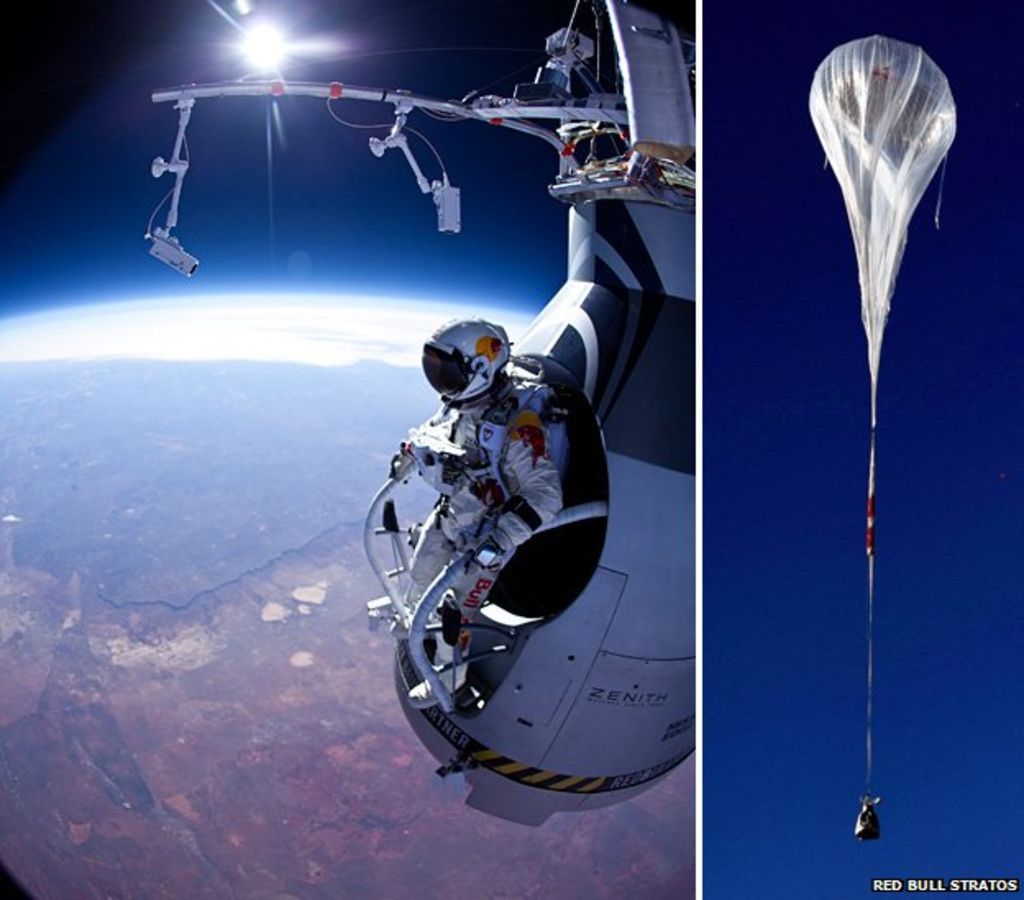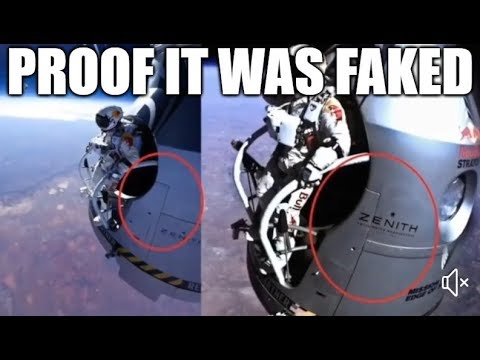Discussing Felix Baumgartner's Red Bull Stratos jump, Neil deGrasse Tyson pointed to a 20" inflatable globe and said:
Tyson is wrong here, it's quite possible to see the curve from 45,000 feetThe dude who jumped out of a perfectly good balloon, Felix Baumgartner, he would have been about 2mm above the surface of this globe. That's his "edge of space" jump [laughter]. I don't have a problem if he does it, the honesty of it would diminish what he was actually doing. and not only that they make sure to photograph him standing there with a really wide angle lens that curves horizontal lines. So in the photo you see this curvature of Earth's surface and you say "Wow, he's in space, look at that!". No he's not! At that height you don't see, you don't see the curvature of the earth if you're 2mm above this beach ball. You just don't. That stuff is flat!
Baumgartner jumped from 127,852 feet, three times as high.
Tyson correctly notes that this is not the edge of space, and photos with fisheye lenses are misleading. Here's the type of photo (on the left):

However there were several cameras on board. Some of which were NOT fisheye
[Edit: it's possible this a lens profile corrected version of the 15mm wide angle shot, see below]
You can see the curve there, even though there's quite a bit of haze. Its perhaps more visible if you add a straight edge and adjust the contrast.
This alone proves DeGrasse Tyson wrong, but what's interesting about this curve being visible is IT ISN'T THE ACTUAL JUMP. This a test jump from 71580 feet, only a bit more than half-way up!
The actual mission used a smaller capsule, and there's not that many good photos released. None that are not wide angle distorted that I could fine, but we can work around that.
The cameras were in "pods", each containing a cluster of cameras.
There's a smaller camera, presumably for streaming, then two large cameras identified as:
https://www.imaging-resource.com/ne...cameras-from-canons-to-reds-to-document-baumg
I have the Canon EF-S 10-22mm lens, it's a fairly rectilinear lens with just slight pincushion distortion, but the photo seems to be taken with the "Canon 5D Mark II or Mark III with a Canon 15mm f/2.8 fisheye lens". If I take the best photo I could find, and assume it's not cropped, then apply the default correction profile with no tweaks,The video doesn't name the actual cameras used but from the clip we see what looks like a Canon 5D Mark II or Mark III with a Canon 15mm f/2.8 fisheye lens, along with a Red 4K camera with a rather basic Canon EF-S 10-22mm f/3.5-4.5 USM mounted on front.
we get:
Which still shows a curve, and a bit more than in the test jump photo. As expected.
But this particular photo shoot, fascinating and impressive though it might be, is a bit of a red herring. There's plenty of photos of the curve from much lower altitudes (like Wolfie's 46,000 foot shot, above). You can even, with care, do it from 500 to 1000 feet, because then the atmosphere has little effect. With an infrared camera you can see the horizon much more clearly, and see the curve from around 30,000 feet. (and more of it, as the camera is in landscape orientation)
So why did Tyson say this? He was in the middle of making a point about how Baumgartner wasn't really that high, relative to the size of the globe. Perhaps he misspoke, or was simplifying to make a point - really meaning "you don't see MUCH curvature" and "that's stuff is nearly flat!" Or perhaps he was referring to the sense of curvature of the surface, not the horizon - we see in the fish eye photo the ground seeming to curve away.
A point missed here is that it's very obvious that he's not saying the Earth is flat - heck, he's actually pointing at a globe and saying that's the shape of the Earth.
But on the face of it his assertion that "you don't see the curvature of the earth" from 128,000 feet is just flat wrong.
Last edited:

